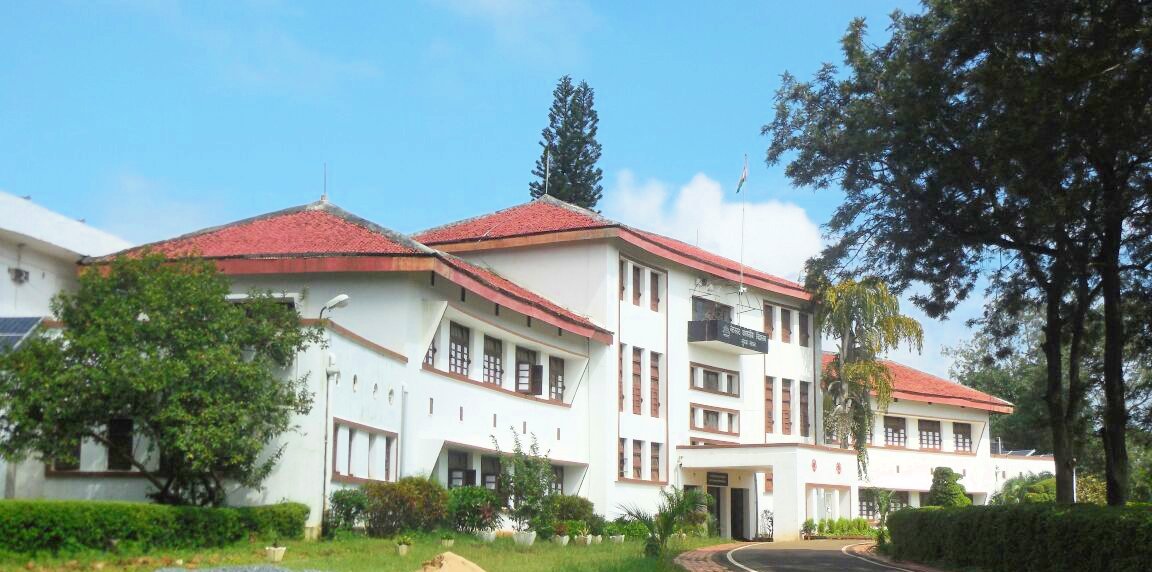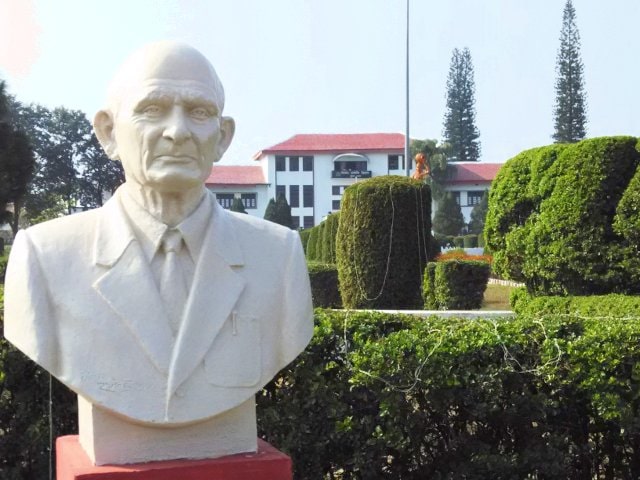
The Beginning
 Immediately after India gained independence, a need was felt for an educational institution that could match global standards. On April 29th 1948, an assembly chaired by the speaker Mr Vindhyeshwari Pd. Verma, in the Assembly Chamber Patna, passed a resolution of instituting a school on the lines of English Public Schools. Sri Sarjoo Pd. Sinha (MLA) commended the cause boldly. The debate mainly revolved around the need to mould merit to national needs. This could be achieved by incorporating a sense of duty, sensitiveness, self-reliance, discipline, and character – all into one. This resulted in a scheme to establish ‘Vidya Vihar’, it was discussed with Mr Frederick Gordon Pearce and Education secretary Sri J.C. Mathur on Dec 12th, 1951. The efforts made by Chief Minister Sri Krishna Pd. Singh (Bihar Kesari), Education Minister Sri Badri Pd. Verma, and the Chief Secretary Sri Lallan Pd. Singh were instrumental in seeding the idea of Netarhat. Finally, Netarhat Residential School opened its doors on 14th Nov 1954 under the principalship of Charles James Napier joined by three masters, two instructors and sixty meritorious students. The date marked the dawn of a colossal heritage that will be celebrated on and on.
Immediately after India gained independence, a need was felt for an educational institution that could match global standards. On April 29th 1948, an assembly chaired by the speaker Mr Vindhyeshwari Pd. Verma, in the Assembly Chamber Patna, passed a resolution of instituting a school on the lines of English Public Schools. Sri Sarjoo Pd. Sinha (MLA) commended the cause boldly. The debate mainly revolved around the need to mould merit to national needs. This could be achieved by incorporating a sense of duty, sensitiveness, self-reliance, discipline, and character – all into one. This resulted in a scheme to establish ‘Vidya Vihar’, it was discussed with Mr Frederick Gordon Pearce and Education secretary Sri J.C. Mathur on Dec 12th, 1951. The efforts made by Chief Minister Sri Krishna Pd. Singh (Bihar Kesari), Education Minister Sri Badri Pd. Verma, and the Chief Secretary Sri Lallan Pd. Singh were instrumental in seeding the idea of Netarhat. Finally, Netarhat Residential School opened its doors on 14th Nov 1954 under the principalship of Charles James Napier joined by three masters, two instructors and sixty meritorious students. The date marked the dawn of a colossal heritage that will be celebrated on and on.
What Makes Netarhat Unique
An institution that produces a talented bunch of students who go on to lead in multiple areas, has to be unique. The uniqueness of Netarhat comes from multiple factors - ranging from students' self-reliance to living in the midst of nature. The infrastructure of the school is impressive. Social Science and Physical Science are taught from the beginning; the school has rich laboratories to experiment in and observe. Additionally, extra-curricular ‘subjects’ are equally important - metal and woodwork classes to learn the use and importance of tools, agriculture / horticulture classes to learn and understand farming and its importance, counselling classes to nourish mental health and many more. Music, Drama, Debate, Elocution, NCC, Yoga round off the students’ experience. Sports are an integral part of life at Netarhat and students learn to play and excel in multiple sports – Football, Hockey, Athletics, Cross-Country racing and so on.
Despite being miles away from home, the students never miss their home - the teachers care for their wards like their own children. Batchmates spend around 4-6 years together and thus mean the world to each other. Junior students get the guidance of their seniors and form strong bonds. Students treat all staff members with the utmost respect.
Netarhat sits in the lap of nature; it assists the development of a sensitive approach in the mind of the students. The place is renowned for its enchanting Sunrise and Sunset and beautiful waterfalls.
A Day In The Life Of
 The students of Netarhat go through a rigorous daily schedule, with not a minute to waste. From rising in the morning to going to bed, there is a bell chiming to remind the students. The students rise early - at 05:00 am. They understand that it is better to wake up and chase your dreams than to continue to sleep with dreams. A self-study period follows, for one hour. This is followed by P.T. on the main sports ground of the school. From 06:35 to 07:20 am the students are required to clean the premises as per their daily tasks. After bath and breakfast (if required hospital visit), assembly takes place from 08:20 to 08:40 am. Classes run till 12:40 pm with a break for lunch. Sufficient time is allotted for lunch and rest. The class resumes from 02:05 to 03:30 pm. This is followed by a light snack – milk and fruits. One hour from 04:05 to 05:50 pm allows students to play sports which may vary every day. Cleaning the house and premises in the evening comes after an hour. Self-study for two hours follows 'Mounvela' of 5 minutes. Dinner and recreation go from 09:05 to 09:35 followed by Light out at 09:40 pm. This simple schedule makes the students organized and methodical.
The students of Netarhat go through a rigorous daily schedule, with not a minute to waste. From rising in the morning to going to bed, there is a bell chiming to remind the students. The students rise early - at 05:00 am. They understand that it is better to wake up and chase your dreams than to continue to sleep with dreams. A self-study period follows, for one hour. This is followed by P.T. on the main sports ground of the school. From 06:35 to 07:20 am the students are required to clean the premises as per their daily tasks. After bath and breakfast (if required hospital visit), assembly takes place from 08:20 to 08:40 am. Classes run till 12:40 pm with a break for lunch. Sufficient time is allotted for lunch and rest. The class resumes from 02:05 to 03:30 pm. This is followed by a light snack – milk and fruits. One hour from 04:05 to 05:50 pm allows students to play sports which may vary every day. Cleaning the house and premises in the evening comes after an hour. Self-study for two hours follows 'Mounvela' of 5 minutes. Dinner and recreation go from 09:05 to 09:35 followed by Light out at 09:40 pm. This simple schedule makes the students organized and methodical.
The Ashrams
Eliot defines Home as a place where one starts from. In the context of Netarhat, Ashrams are the home to the students where they start to achieve their hopes and dreams. Students are assigned different ashrams from a set of 21. There are 7 sets, each set has three ashrams with a shared kitchen. The sets also compete as one unit in athletic and drama competitions. A typical ashram consists of five living rooms, one study room, a dining room, an entertainment room, and bathrooms. Each ashram has around 5 students from each class so that a strong relationship is set up among juniors and seniors. The house of the housemaster attached to the ashram; the housemaster is also one of the teachers of the school. The housemaster is addressed as Srimanji and his wife as Mataji; this shows the close relationship between the housemaster and his wards. They assure the presence and participation of their students in school co-curricular activities. Their 24x7 availability is guaranteed; be it emotionally, economically, medically, or academically. The students are allocated daily cleaning tasks as per a rotational chart; they keep their house pristine and immaculate. The ashram system imparts the sense of brotherhood, cleanliness, harmony and unity.
The Gurus
Netarhat's credibility and charisma owe a lot to the teachers residing there with sheer intent of shaping the budding talent. Their guidance and care make the plateau inhabitable for the students. Whenever a student joins hands to greet and wish Namaste or touches the feet of teachers, they just pour all the affection and blessings out for him. A student in Netarhat climbs the ladder to prosperity with teachers creating the steps on the ladder. Apart from academics, the teachers also interact with the students in different schedules like sports, drama, NCC, picnic and many more. They get to know their students in all facets of school life. A teacher doesn't only teach from books, (s)he is his referee, parent, mentor, tutor, instructor and what not. Srimanji and Mataji are always present for their children.
